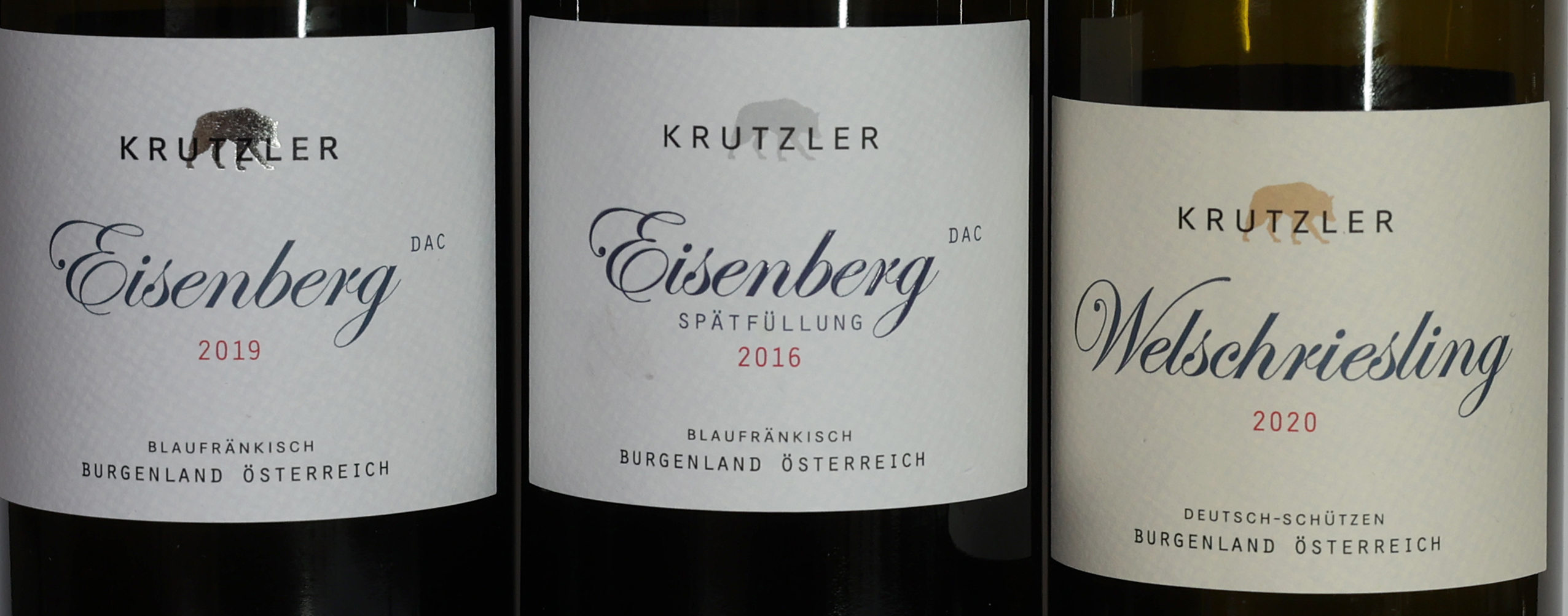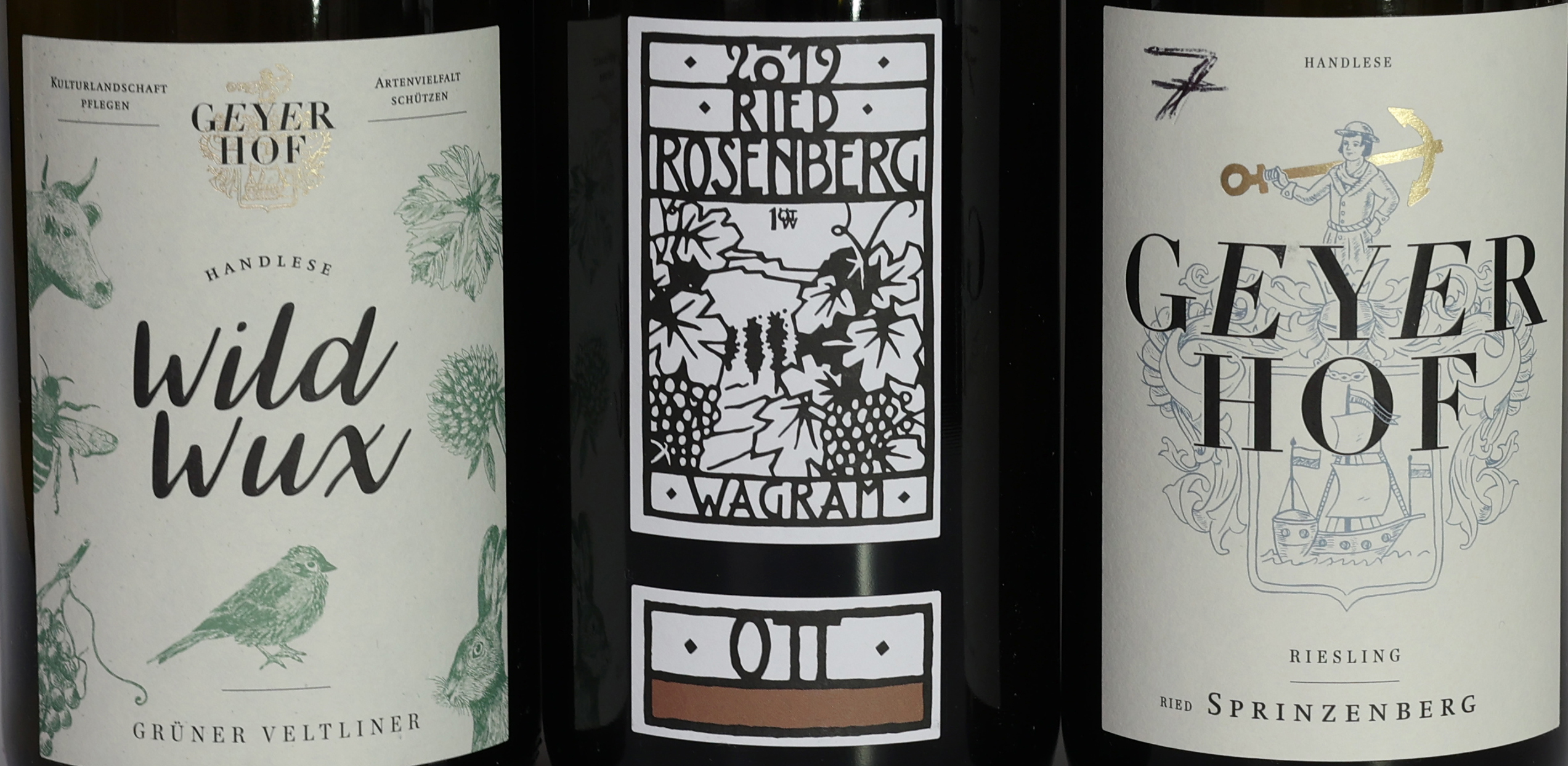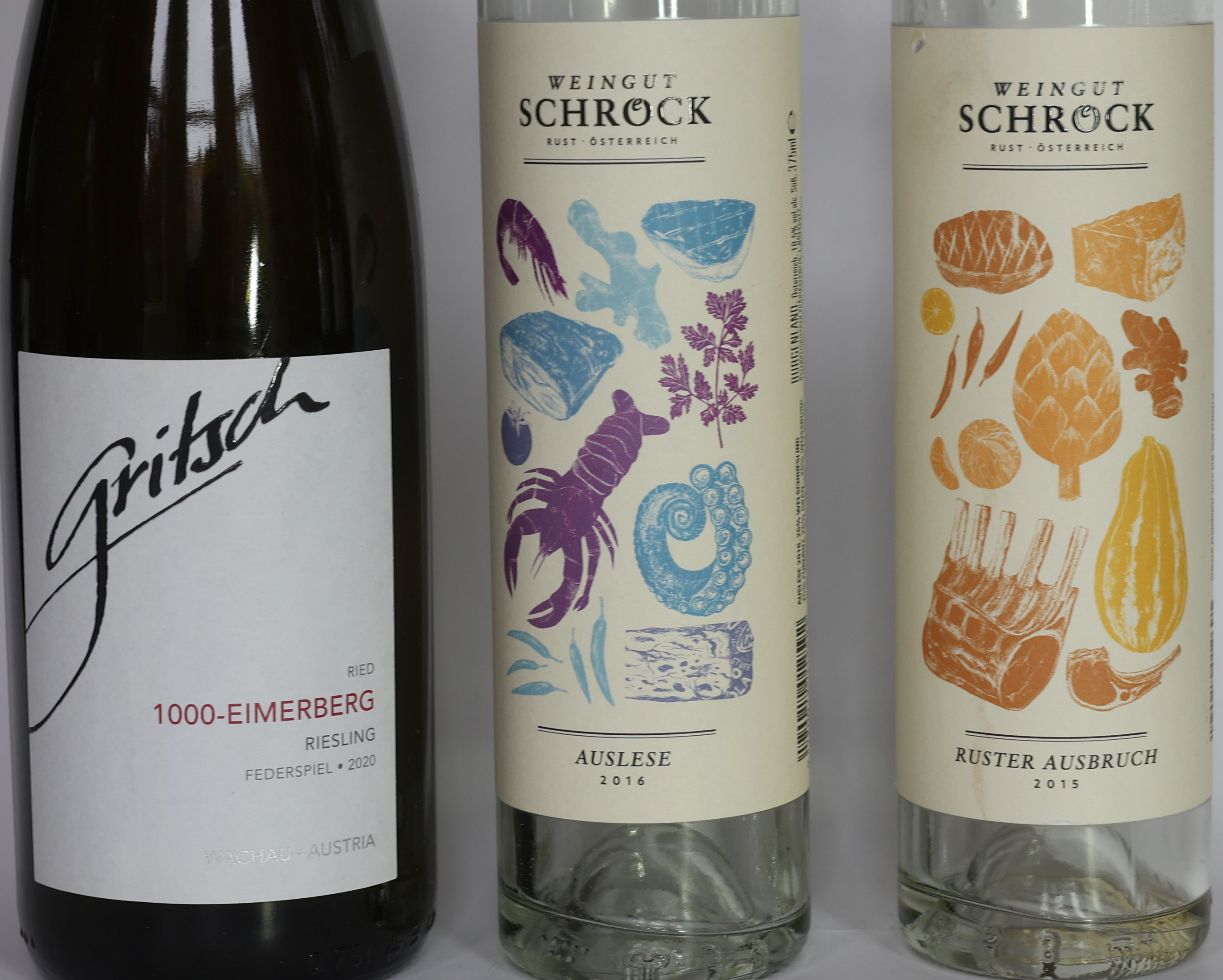This was a double celebration: Mark’s 50 years in the wine trade, and his and our first face to face tasting since the troubles began.
In the more than usually atmospheric Cherwell Boathouse (candles on the tables!) 40 or so members successfully met to explore the wines of Austria.
Wine has been made in Austria – mainly in the eastern regions bordering Hungary and Slovenia – since well before Roman times but until recently it was mostly consumed domestically or exported to Germany. The rest of the world took little or no notice until the ‘antifreeze’ scandal of 1985 made Austria briefly notorious when a few merchants (not growers it should be said) were caught using diethylene glycol in the bottling of sweet wines destined for the cheap end of the German market. No-one was harmed (in contrast with the illegal use of methyl alcohol in Italy that was responsible for numerous deaths at a similar time). In fact the scandal was a catalyst for the very significant improvement in the quality of Austrian wine subsequently. A short-term catastrophe was thus turned to advantage by a determined effort to raise standards and engage with the international market.
Mark has been importing from Austria for many years and now, he says, he’s ‘never disappointed’ with wines that meet his central criteria of balance, vitality and originality. Bursts of summer heat in June / July add to ripeness but the cool nights preserve the refreshing acidity that distinguishes Austrian wines.
 With some difficulty, he admitted, Mark had made a selection of nine wines for us to try. We started with two reds made from Blaufrankisch (aka Lemberger). Mark often prefers to start with red wines in a mixed tasting since the transition from red to white is less harsh than that from most whites to the harsher tannins of red wine – and it’s better for the teeth and palate.
With some difficulty, he admitted, Mark had made a selection of nine wines for us to try. We started with two reds made from Blaufrankisch (aka Lemberger). Mark often prefers to start with red wines in a mixed tasting since the transition from red to white is less harsh than that from most whites to the harsher tannins of red wine – and it’s better for the teeth and palate.
Blaufrankisch is a versatile grape, producing wines that range in style from the juicy freshness of young Beaujolais to complex age-worthy reds. Both of these were from Weingut Krutzler in the Eisenberg (think of it as an appellation) but there was a real contrast between the cherry and damson fruitiness and fresh acidity of the 2019 wine we started with and the richer spicy notes of the oak-aged 2016 Reserve Spatfullung. This latter was remarkable value at £14.40 – an opinion endorsed by Jancis Robinson in a recent note on the relative value for money of Bordeaux and Austrian reds.
Wine no 3 was the 2020 Welschriesling. This was another wine from Krutzler, a small artisan grower (like most of those with whom Mark deals in Austria). This is not a land of massive monoculture but a varied viticultural landscape and a tradition of growers exploiting the range of soil conditions found even in small holdings. The result is, as Mark put it, a ‘mosaic’ of vineyards and mixed farms. Not just grapes but well-fed cattle, varied orchards and rich meadows – along with ‘bugs having fun’.
The Welschriesling (also known as Laski or Olasz) is a wine for everyday drinking on its own or with food. ‘No great ambition’ but some complexity on the nose and lots of refreshing acidity. A steal at £11.
 With wines nos 4 and 5 we moved into the world of Gruner Veltliner. Gruner is definitely Austria’s signature grape and (like Blaufrankisch but at a higher level) capable of great variety and considerable – even great – complexity. The finest expressions of Gruner are mainly grown on rich loess soils along the Danube valley (north and south of the river) in the districts of the Wachau, Kamptal, Kremstal and Traisental.
With wines nos 4 and 5 we moved into the world of Gruner Veltliner. Gruner is definitely Austria’s signature grape and (like Blaufrankisch but at a higher level) capable of great variety and considerable – even great – complexity. The finest expressions of Gruner are mainly grown on rich loess soils along the Danube valley (north and south of the river) in the districts of the Wachau, Kamptal, Kremstal and Traisental.
The first of our Gruners was Weingut Geyerhof’s 2020 Wildwux from Kremstal. The label reflects what Mark was saying about biodiversity – with pictures of animals and insects on the label. Geyerhof’s land is on a faultline with lots of different soils and their range reflects this diversity. Wildwux means something like ‘Wild Growth’ but the reality is that this wine benefits from hours and hours of careful work in the vineyard to keep the plants as healthy as possible – the key to success in Mark’s view. Bio-dynamism may be ‘viticultural voodoo’ or it may work but it simply cannot be successfully applied to ‘a thousand acres of monoculture’ or even 81 ha Bordeaux estates. The phrases ‘cow horns’ and ‘bullshit’ came to mind…
The Wildwux already showed some complexity on the nose and that touch of white pepper that marks so many Gruners. This was a light alcohol wine for drinking young – though there’s little doubt it would improve for a year or so (perhaps longer) in bottle.
By contrast, wine no 5, Bernhard Ott’s Rosenberg 2019 was richer in colour, richer on the palate and considerably more complex with aromas of pears, citrus and stone fruit (and a touch less pepper). More alcoholic, more intense and greater length and capable of ageing as long as good Riesling (perhaps even longer) but nearly double the price at £27.20 versus the Geyerhof wine at £14.40.
 Then came two Rieslings: the 2017 Sprinzenberg from Geyerhof at £15 and the 2010 1000-Eimerberg from F.J. Gritsch at £16. Austria is ideal territory for dry Rieslings (along with a few other sites such as Clare Valley) and these two were classic expressions of the grape with their lime-dominated noses and powerful acidity balanced by rich – even slightly sweet – fruit.
Then came two Rieslings: the 2017 Sprinzenberg from Geyerhof at £15 and the 2010 1000-Eimerberg from F.J. Gritsch at £16. Austria is ideal territory for dry Rieslings (along with a few other sites such as Clare Valley) and these two were classic expressions of the grape with their lime-dominated noses and powerful acidity balanced by rich – even slightly sweet – fruit.
Wines such as these become drier over time – even over 5-10 years and neatly sum up Mark’s three key questions about a wine; namely ‘latitude, altitude and attitude’. Except in very hot regions such as Sicily or the high Castilian plateau in Spain, the optimum altitude tends to lie between 15-450 metres above sea level. A rough yardstick – thinking of Etna wines for example – is that a 1000 metres extra height puts you more or less a 1000 kilometres further north.
We closed a memorable tasting with two sweet wines from Heidi Schrock’s Burgenland property in Rust am See (See being the shallow, botrytis-inspiring Neusiedlersee). Heidi makes several sweet wines and we had the pleasure of sampling her 2016 Auslese at £17.50 per half bottle) and the 2015 Ruster Ausbruch ’Auf den Flügeln der Morgenröte’ (“On the Wings of the Dawn”) at £38.40. The former has less sugar (105 gsl versus 190 gsl) and was slightly less gold in colour and had a touch of kerosene) but the key difference, Mark suggested, was the evident botrytis on the nose of the Ruster Ausbruch (which was Gault-Millau’s wine of the year in 2016). These wines compare in flavour to high end Sauternes but the crucial difference is that they are lighter in alcohol (10/11% versus 14/15%).
Ruster Ausbruch is made with a complex process akin to Tokay Aszu in its mixing of botrytised and non-botrytised material but, in the end, it’s not in the kitchen but in the garden that great wines are made; wines which are the ‘unique expression of a single place’ or (to put it another way) expressing the ‘single-minded, purposeful vision’ of the makers.
In her eloquent expression of the gratitude of the Club to Mark, Anna Beer spoke of ‘encyclopaedic knowledge handled with grace and refinement’ – a very fair definition not only of Mark but his growers and their wines.
GH: 20/11/21